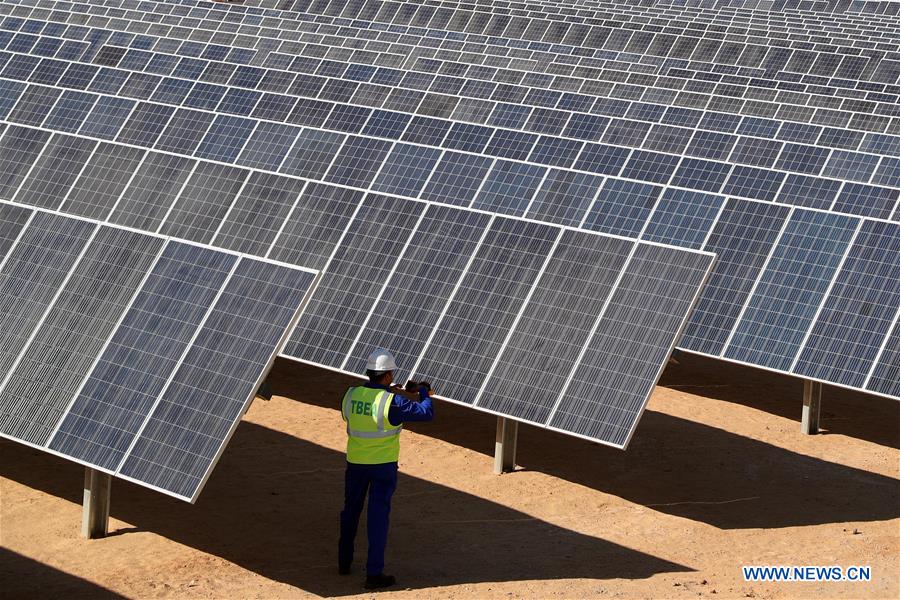China promotes green development along Belt and Road
As the China-proposed Belt and Road Initiative (BRI) advances, the country has been committed to making BRI a green cause of sustainable development.
Wearing a white safety helmet, 26-year-old Egyptian engineer Ahmed Mansour works outdoors eight hours a day, braving temperature above 40 degrees Celsius in Egypt's southern province of Aswan.

A man works in a TBEA solar power station in Egypt's southern province of Aswan, March 18, 2019. [Photo/Xinhua]
Checking the running state of all holders and recording data from solar inverters, Mansour has been dedicated to maintaining solar panels in Aswan since 2017 when the photovoltaic power (PV) generation project he works on started its trial run.
"It is meaningful that we are using environmentally friendly ways to produce precious electricity," Mansour said.
The project is part of the overseas solar development of China's green energy company TBEA Sunoasis Co., Ltd., which officially started building four solar power stations last year at the Benban Solar Energy Park in Aswan.
The stations, with an output of 186 megawatts, are part of the giant Benban Solar Plant which aims to generate up to two gigawatts of utility-scale solar capacity through a total of 40 projects.
So far, three of the four stations have been completed.
Mansour said he was impressed by TBEA's measures to protect the environment. "During construction, waste such as garbage and sewage were disposed of by adhering to strict standards," he said.
The project is estimated to help cut the emission of more than 23,000 tonnes of dust, over 86,000 tonnes of carbon dioxide and more than 2,600 tonnes of sulfur dioxide annually.
As the China-proposed Belt and Road Initiative (BRI) advances, the country has been committed to making BRI a green cause of sustainable development.
China and the United Nations Environment Programme signed a Memorandum of Understanding (MoU) in 2016, focusing on enhanced collaboration to build a green Belt and Road.
It has also signed cooperation agreements concerning ecological and environmental protection with more than 30 countries participating the BRI.
"The building of a green Belt and Road can help countries achieve the environmental goals of the UN 2030 Agenda for Sustainable Development," said Zhai Kun, a professor with Peking University.
Last Thursday, China officially launched the International Coalition for Green Development on the Belt and Road, which could serve as an international platform for Chinese and foreign leading agencies to work closely together to conduct research and make policy recommendations on key issues as well as facilitate international dialogue.
"In the near future, the establishment of this coalition could raise the visibility and importance of green infrastructure and facilitate deeper cooperation between BRI partners," said Manish Bapna, executive vice president and managing director of the World Resources Institute.
The country has also made clear its commitment to incorporate green strategies into the BRI by releasing the Guidelines on Promoting Green Belt and Road and the Belt and Road Ecological Cooperation Plan. These documents outline a vision for sustainability.
China is willing to launch cooperation on ecological and environmental protection with countries along the Belt and Road, expand the International Coalition for Green Development and promote a coalition of sustainable cities under the BRI, according to a report released last Monday.
"The building of a green Belt and Road needs joint efforts, which could also bring win-win results to all parties involved," said Xue Li, researcher of Chinese Academy of Social Sciences.

